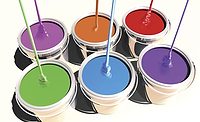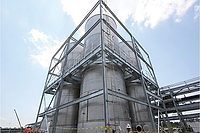
In previous articles, we have reviewed The Rauch Guides to the U.S. Paint Industry (1984, 1987, 1990, 1998). I continue to find these guides to be valuable tools for the industry. This article reviews the recently published 2001-02 guide.
Impact Marketing Consultants (IMC) was established in 1996 to acquire the Marketing Guide business from Rauch Associates. The president of IMC, Donald R. Dykes, was formerly with Kline & Co., as was James A. Rauch, publisher of the previous Rauch Guides. IMC is continuing to publish guides under the Rauch name for such industries as chemicals, plastics, adhesives, paints and inks. This new Coatings Guide was published in June 2001. (Note: in this review, the word "coatings" will often be used to replace "paint.")
As before, the authors have done an excellent job in presenting a mass of data, observations and projections concerning this vast, complex and very important industry. This edition of the guide covers the U.S. coatings industry (including paint) for 1999 and 2000, with projections to 2005. It presents extensive data, tables (82) and figures (22) together with discussions and analyses of materials, markets, companies, and trends.
Section 1 includes much crucial industrial and economic information as to industry shipments, markets, structure, capital expenditures, company performance and industry concentration, profits, and forecasts. Shipments and forecasts are summarized in Tables 1-1 to 1-4. Also included is information on operations, employment and distribution. The discussion of foreign trade (including Canada) and world production is very complete. The list of recent mergers and acquisitions is quite complete and well prepared; it is further referred to in Section 5. The treatment of the all-important government regulations affecting the industry is outstanding, in greater depth than the previous Guide, and very useful. For example, Tables 1-34 and 1-35 present updated VOC limitations for a variety of coatings. This section also presents an outlook on the future effects of environmental (and VOC) control on a number of facets of the industry.
Section 2 treats the materials used in the coatings industry in impressive detail. The raw materials covered include: vehicles (resins and other binders), solvents, pigments, fillers and extenders and additives (and containers - metal and plastic). The materials are tied into their finished product usage (Section 3) and the statistical information presented is quite helpful. The discussion of acrylics is very thorough, and emphasizes their importance (as mostly waterborne) in the industry. (Note: I continue to be distressed to see the term "water-based" still being used, instead of the more proper term "waterborne.") Discussions of epoxies and urethanes are very complete. Table 2-1 summarizes the use of raw materials in coatings in 1992 and 1997. Most solvent usage has declined, due to the growth of waterborne coatings and solvent emission restrictions; however, oxygenated solvents usage has increased slightly.
Section 3 covers the products of the coatings industry: architectural, industrial OEM (original equipment manufacturer, product coatings), and special-purpose coatings. The vehicles used, major producers and shipments are listed, tabulated and discussed in good detail. The coverage of architectural coatings is one of the best I have seen. The treatment of automotive coatings is excellent, with data brought up to 1999. The sub-sections on powder and radiation-curable coatings have been expanded and are very helpful.
Section 4 is again a useful tabulation of sources of statistical information, meetings, trade shows, trade associations, professional societies, periodicals, directories and buyers' guides that are important to the industry. It is noted that statistical information, formerly SIC codes (Standard Industrial Classification) has been augmented by teen-digit NAICS codes (North American Industry Classification System).
Section 5 continues to be probably the most valuable and important section for market researchers seeking information about U.S. paint companies. There are an estimated 1,120 coatings companies in the United States. This directory lists and describes in detail 332 of the larger companies with annual U.S. sales of over $5 million. The remaining 437 companies (Section 5A) with annual sales under $5 million are covered in less detail. The arrangement of this whole section is most helpful, giving pertinent and useful information about each company up to year 2000. For the larger companies, this includes plant locations, total company sales, number of employees, types of products, telephone and fax numbers, and (new) websites.
In Section 5B, as before, a cross-reference is included, listing parent companies, subsidiaries, divisions and affiliations that are not described as separate entities. As before, I find this guide (and its predecessors) to be of definite assistance in my work. In a single volume it brings together considerable widely scattered industrial information with thorough, concise and highly readable analyses. It is enthusiastically recommended to all workers in the coatings and allied fields; they will find it equally as helpful.
"The Rauch Guide to the U.S. Paint Industry - 2001-02 Edition" is available from Impact Marketing Consultants Inc. for $445.00 Contact Impact Marketing Consultants Inc. at P.O. Box 1226, Manchester Center, VT 05255; phone 802/362-2325.
The book is divided into five major sections:
- Section 1. Economics, Government Regulations and Foreign Markets
Section 2. Materials and Manufacturing
Section 3. Products and Markets
Section 4. Industry Activities, Organizations and Sources of Information
Section 5. U.S. Paint Companies with Sales at or over $5 Million
Section 5A. U.S. Paint Companies with Sales under $5 Million
Section 5B. Cross Reference





